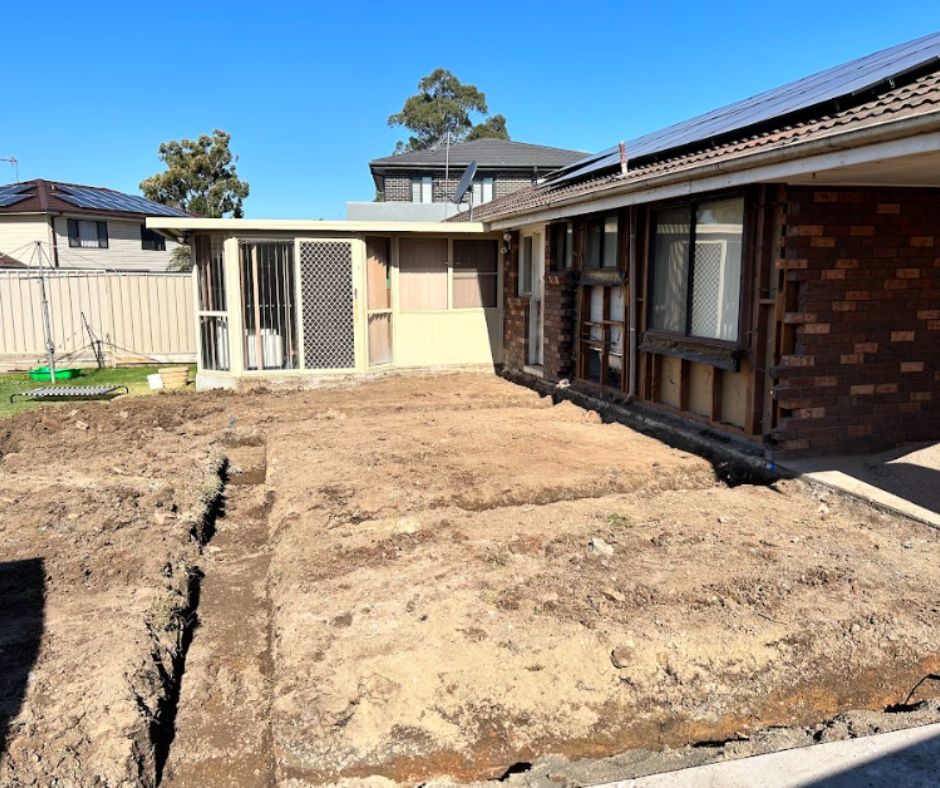Most Common Dangers of Excavations
Excavation is an essential part of most construction projects, whether it’s laying the groundwork for a new building or installing underground utilities. It’s the step that quite literally lays the foundation for success.
However, as important as excavation work is, it doesn’t come without risks. Construction sites, especially those involving deep trenches and heavy machinery, demand careful planning and adherence to safety protocols.
This article explores the most common dangers found on excavation sites and highlights why proper preparation and expertise are crucial, including excavation dangers that need to be addressed to ensure safety.
The Dangers of Excavations
Excavation sites are inherently hazardous environments, and for good reason. They involve deep trenches, heavy machinery, and constantly shifting ground conditions. A misstep or oversight can lead to accidents affecting workers, equipment, and nearby structures.
This is why safety is non-negotiable. Strict safety measures, regular inspections, and well-trained personnel are vital to managing risks and ensuring smooth operations. A proactive approach to safety not only protects lives but also keeps projects on track and on budget.
Most Common Dangers in Excavation Projects
The dangers on excavation sites are complex and hazardous, presenting significant challenges for workers. With unique soil conditions, project requirements, and equipment, these sites pose various risks that workers and managers must be aware of.
Here are the most common hazards faced:
1. Cave-ins and Collapses
Trench walls can fail without warning, causing large amounts of soil to collapse into the excavation. This often happens due to unstable soil or insufficient support systems. Cave-ins are among the most severe risks, as they can trap workers and equipment beneath tonnes of earth.
2. Falling Objects
Excavation sites often involve activity at varying heights, increasing the risk of tools, debris, or equipment falling into trenches. Workers below are particularly vulnerable to injuries from these incidents.
3. Confined Spaces
The limited room in trenches or pits can make movement difficult and increase risks during emergencies. Workers may struggle to exit quickly if something goes wrong. These spaces also heighten the dangers of oxygen deficiency or toxic fume exposure.
4. Groundwater
Rainfall or natural groundwater can accumulate in excavation sites, leading to slippery or weakened soil. This can cause the ground to shift or even trigger landslides. Managing water buildup is essential to maintaining safe and stable working conditions.
5. Underground Utilities
Excavation work often requires digging near hidden pipes, cables, or gas lines. Accidentally damaging these utilities can cause disruptions and create serious hazards, such as gas leaks or electrical shocks. Accurate site surveys are vital to prevent such incidents.
6. Equipment Troubles
Machinery plays a crucial role in excavation, but malfunctions can happen unexpectedly. Equipment failures not only delay progress but can also lead to accidents if operators are unprepared.
7. Soil Stability & Slides
Loose or unstable soil can shift suddenly, causing landslides within excavation sites. This is especially dangerous for workers inside trenches, who may be caught off guard. Identifying and addressing weak soil conditions early is essential.
8. Weather Conditions
Weather can significantly affect excavation safety and progress. Heavy rain can flood trenches, while strong winds or extreme heat can create additional challenges. Monitoring the forecast and adapting plans to changing weather is key to staying safe.
9. Absence of Safety Precautions
A lack of preparation or neglecting safety guidelines can lead to preventable accidents. Poor planning often results in workers being exposed to unnecessary risks. Proactive measures and adherence to regulations are critical for a safe worksite.
10. Engulfment and Entrapment
Loose soil or debris can quickly engulf workers, leaving them unable to move or escape. These incidents are life-threatening and require immediate action. Preventing such hazards begins with proper trench support and close monitoring of soil conditions.
How to Avoid Excavation Dangers
Taking the right precautions can significantly reduce the dangers of excavations. Below are key steps to ensure a safer and more efficient excavation process:
Effective Planning & Execution
Before starting any excavation, a comprehensive site analysis is essential. Proper planning helps identify potential hazards, soil conditions, project needs and the different types of excavation required. Taking the time to prepare reduces risks and allows the team to work efficiently from day one.
Ensure Adequate Shoring & Dewatering Solutions
Excavation walls must be stabilised to prevent cave-ins. Implementing proper shoring systems and dewatering solutions can significantly reduce these risks. Removing excess water also helps maintain soil stability, preventing landslides or shifting ground.
On-Site Supervision by a Professional
Experienced supervisors ensure all safety protocols are followed. Their role is crucial in monitoring compliance with safety regulations and ensuring the design specifications are met. This active oversight keeps the site safe and efficient.
Regular Site Inspections
Frequent inspections are essential to identify and address hazards before they escalate. Regular checks ensure the excavation site remains secure and that safety measures are maintained throughout the project.
Locate Underground Infrastructure
Before digging, always identify buried utilities like gas lines, water pipes, and cables using appropriate tools and surveys. Avoiding damage to these utilities is vital for preventing serious accidents or delays.
Follow Guidance for Safe Excavation Practices
Adhering to regulatory guidelines and industry standards ensures that all excavation practices are carried out safely. This includes everything from shoring systems to site management, ensuring the project follows best safety practices.
Temporary Barricades & Site Fencing
Excavation dangers can be mitigated by setting up temporary barricades and site fencing around the excavation area. These barriers help prevent unauthorized access, protecting both workers and bystanders from potential accidents and ensuring the site remains secure at all times.
Use Personal Protective Equipment (PPE)
Workers must wear the appropriate PPE—helmets, gloves, boots, and other safety gear. This protective equipment reduces the risk of injury and ensures workers are equipped for various hazards on-site.
Ensure Equipment is in Proper Working Condition
Regular inspection and maintenance of machinery are essential to avoid malfunctioning equipment, which can lead to accidents or delays. A well-maintained machine performs better and is less likely to cause issues on-site.
Hire an Expert for Confidence & Peace of Mind
Partnering with a professional excavation company brings expertise to the table. With their knowledge, experience, and access to the right equipment, they can handle even the most complex or high-risk projects safely and efficiently.

Avoid Dangerous Excavation! Hire a Professional Excavation Company!
Excavation work can be risky, but with the right planning and expertise, you can avoid accidents and ensure a smooth project. By following the tips outlined above, you can significantly reduce risks—but working with a professional excavation company takes that safety to the next level.
At MRN Excavations, we specialise in providing comprehensive excavation services across Sydney, Campbelltown, and Wollongong. Our team is experienced in managing all aspects of excavation, from safe site preparation to precise screw piling. With professional supervision, we ensure your project is carried out safely, efficiently, and to the highest standards.
Contact us today for safe, efficient excavation services. Don’t risk dangers in excavation—let our experts handle it!



